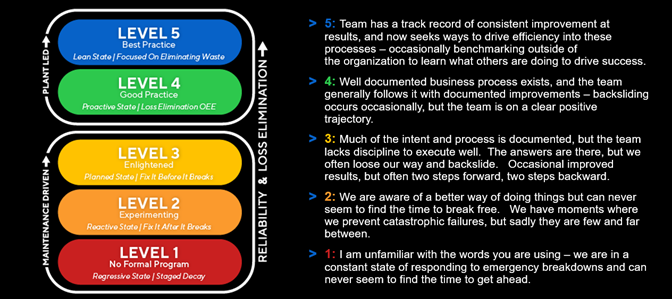An Opportunity for Change
Historically, the facility’s mindset was reactive, maintaining process flow during unplanned outages via redundancies and in-process storage methods. However, the client reported various difficulties upon restarting processes after these outages ended. This initial pain point presented an opportunity for Allied Reliability to help improve outage planning, parts staging, and work execution. There was also a lack of predictive maintenance (PdM) technologies to identify equipment discrepancies while operating; thus, inhibiting real-time corrective measures to avoid downtime.
Another issue was poorly integrated information management systems (Production, Maintenance, and Timekeeping), which hindered the optimal performance of assets and the ability to provide key metrics for process loss analysis and maintenance. Furthermore, an outdated dust collection system was inadequate for and even added to the extremely dusty plant environment, contributing to product contamination and a high failure rate.
Why Allied Reliability?
The site's general manager was interested in benchmarking maintenance and reliability best practices as the next step in their journey to a proactive state over five years. Allied Reliability was chosen for this long-term project to take the quality-minded, ISO 9000 Certified site to a higher level of asset maintenance and reliability maturity due to our proven expertise in developing CBM-based equipment maintenance plans. We were also given the green light to conduct a reliability systems review with actionable recommendations contributing to meaningful, results-driven equipment maintenance plans.



